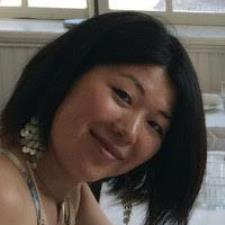Zaki Y.
asked • 04/21/22Japanese particle help
1. A: いま、なんじですか。 B: えっと、さんじです(a. )。 A: あっ、そうです(b. )。 2. A: どようび(c. )どこに いきましたか。 B: たなかさん(d. )りょうに いきました。 A: いいですね。りょうは、おおきいですか。 A: ええ、おおきいです(e. )。 3. A: コンビニが あります(f. )。 B: ええ、ありますよ。しろい たてものです。 A: ああ、しろい たてものです(g. )。 4. えんぴつは、あかいです。ペン(h. )あかいです。
Fill in the blank with an appropriate particle. If a particle is not necessary put X in the blank. Note: Please do not use the particle は.
1 Expert Answer

Chris H. answered • 05/26/22
JLPT N2-Graded Proficiency in Japanese with Workplace Experience
Well, no one will just answer the questions for you, but let's do a basic overview of particles with which you should already be familiar:
か -> An interrogative (question-marking) particle. Use this at the end of a sentence to turn it into a question. Example question: (あなたは)アメリカじんですか?"Are you/they an American?" (unlike in English, you do not have to say あなたは if you don't want to here. The other person will know about whom you are asking from context)
も -> "Also," or "too." Simply use this after a noun. わたしもアメリカじんです。"I am also an American."
の -> Possessive particle. Simply use this after a noun. これはわたしのペンです。"This is my pen."
に -> Location particle. Use it after a noun to mark where the verb is taking place. コンビニにいきます "I am going to the convenience store." コンビニにみずがあります "There is water in the convenience store." Both "to" and "in" indicate location of the verbs "go" and "is," respectively.
よ -> Used to present new information or to emphasize information that the speaker believes both parties should already know. Example: わたしはアメリカじんですよ "I'm an American."
ね -> Used to soften statements or to seek confirmation from the other party that the information you are presenting is correct. You could think of this as "Right?" or "Isn't it?" in English in the sense of "You're American, right?" or "Nice weather today, isn't it?" But the ね is not always translated directly into English like this.
Example: In a phrase like いいですね, the ね is not there to actually ask "That's nice, isn't it?" because you're expecting an answer, but rather to sort of soften the phrase as a whole and sound more polite/conversational. It just sounds simply saying, "That's nice" does in English.
If you asked ぺんはありますか? "Is there a pen?" and someone responded そこにペンがありますよ "There's a pen there [near you]" you could say このぺんですね "This pen [is the one you're talking about], right?"
は and が -> は marks the topic of a sentence. Attach it to a noun. It is used for more general statements, to contrast information, and to formulate questions by comparison.
Example: わたしはアメリカじんです。あなたは?I will let you figure out what this phrase might mean. Also, remember to use rising intonation on the "wa" when speaking to indicate a question.
が marks the subject of the sentence. Attach it to a noun. You are emphasizing that it is specifically THIS thing (a place, a person, an object, etc) that is "doing" the verb. Remember that あります、 います、and です are all verbs, so simply "being" is considered "doing" something.
One very easy way to remember the difference between が and は is to take these two sentences:
わたしはアメリカじんです。"I am an American." (there may be other Americans in the world, and I, at least, am one of them)
わたしがアメリカじんです。"I am THE American." (This sounds weird in English and most often you would not say this UNLESS someone asked a question looking for a specific person, something like これをしたアメリカじんがだれですか ("Who is the American who did this?") then you could use が to specify that you are THE American in question).
That should hopefully give you enough information to answer these questions, but please let me know if you have any questions. Japanese particles are tricky at first but with enough practice and familiarity you will have no problem.
Still looking for help? Get the right answer, fast.
Get a free answer to a quick problem.
Most questions answered within 4 hours.
OR
Choose an expert and meet online. No packages or subscriptions, pay only for the time you need.





Keiko K.
01/12/23